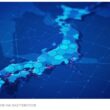FCC approves states leasing 4.9 GHz spectrum, but practical timing remains unclear
FCC commissioners this week voted 3-2 to approve an order that allows states to lease 4.9 GHz spectrum—50 MHz of airwaves previously designated for public-safety use—to commercial entities, although sources indicated that there is some uncertainty surrounding the practical timetable for implementing such leasing deals.
As expected, FCC commissioners were divided along party lines on the issue, with the Republican majority supporting the new leasing arrangement and Democrats expressing opposition. In addition to the order establishing the 4.9 GHz leasing regime, the commission also approving a proceeding that seeks comments about proposed rules for implementing the leasing framework.
Beltway sources expressed uncertainty to IWCE’s Urgent Communications regarding the practical timing for states to begin signing 4.9 GHz lease deals with commercial entities like utilities to leverage the spectrum.
Some noted would allow states to enter into leasing agreements as soon as the FCC order becomes effective, while others questioned whether such arrangements could be reached until the conditions outlined in the further notice are finalized—rules that likely would be determined by a different set of commissioners after the November elections.
FCC Chairman Ajit Pai said the 4.9 GHz regulatory regime needs to be changed, noting that spectrum currently is underutilized under existing rules that limit its use solely for public-safety purposes, describing the existing situation as “an unacceptable state of affairs.” Under the new order, states would have the flexibility to utilize the 4.9 GHz airwaves in a manner that works best for them, he said.
“We recognize the simple truth that what works in New York City may not make sense in rural West Virginia,” Pai said during Wednesday’s FCC meeting, which was conducted virtually and was webcast.
“If an eligible state wants to lease to FirstNet for use in the public-safety broadband network, they can do that. If it wants to lease the spectrum to a commercial entity to use for deploying a dedicated public-safety broadband network, they can do that. If the state wants to lease spectrum in less densely populated areas to an Wireless Internet service provider, an electric utility or another critical-infrastructure industry—or a mix of all three—and retain the spectrum in more densely populated areas, it can do that, too.”
FCC Commissioner Brendan Carr also emphasized the importance of states being given an opportunity to utilize the 4.9 GHz spectrum as they wish.
“They can keep using this spectrum for public safety—and, in fact, do so more efficiently, due to the new rules we put in place—or they can lease these airwaves and use the revenue that’s generated to fund public safety or other mission-critical initiatives,” Carr said during the meeting. “They have the choice, and I trust them to make the right call for their communities.”
FCC Commissioner Jessica Rosenworcel expressed her opposition to the new 4.9 GHz rules, noting that public-safety organization overwhelmingly disagree with the measure, which she described as a “a slapdash effort to try to foster use of this spectrum by giving states the right to divert public-safety communications in exchange for revenue.”
Rosenworcel said that providing 4.9 GHz broad leasing rights to states likely will result in different uses in various locations, which likely will undermine the existing spectrum band’s existing public-safety purpose by fragmenting the market and make any interoperability goals at 4.9 GHz even more difficult to realize.
“[With the 4.9 GHz order,] we clear the way to kick first responders off this spectrum and then cede this agency’s authority over the band to state licensees who will be empowered to lease these airwaves to third parties to generate revenue,” Rosenworcel said during the meeting.
“This adds up to a reduction in public safety communication with a more fragmented market for equipment, and a 5G future with a whole bunch of the same problems we had with leases in the 2.5 GHz band [that] … we went to great efforts to dismantle in the not-so-distant past. What a mess.”
FCC Commissioner Geoffrey Starks also expressed his opposition to the 4.9 GHz order, noting that the measure not only lacks support in the record, but the lack of a record on many key issues raises legal questions.
“At a time our safety organizations are stretched to their limit and their communication needs are increasing, this commission is adopting—with no notice and comment—an approach i think is not only unwanted but runs contrary to years of public-safety spectrum policy,” Starks said during the meeting.
“It’s black-letter law that agencies must provide notice and an opportunity to comment before adopting a rule. But at no point have we proposed effectively delegating the commission’s spectrum authority over the band to state governments.”
The new 4.9 GHz rules specify that signing leasing agreements only would be an option to states that do not divert 911-fee revenue to non-911 purposes—a stipulation proposed by FCC Commissioner Michael O’Rielly, who has fought to halt 911 fee diversion during his commission tenure, which is expected to end during the coming weeks.
“The modified version excludes states that are diverting 911 fees to other purposes from reaping any benefits from this spectrum largess, such as New Jersey, New York, Rhode Island and certain counties in Nevada,” O’Rielly said during the meeting. “These states have proven themselves untrustworthy, when it comes to managing precious consumer-paid fees.
“Here, we can immediately lock in righteous policy change that ensures current diverters will pay a price for their malfeasance while seeking comment on a broader approach, including how to treat diverting states in the future. The leasing fees and other benefits contained in this item may be, in fact, modest compared to the diverting dollars, helping to explain the lengths at which some states will go to continue this practice. But the current item will take a tangible step—probably my last—to rectify the injustice of fee diversion.”
Starks did not express an opinion about excluding states that divert 911-fee revenues from leasing 4.9 GHz spectrum from a policy perspective. However, Starks was outspoken in his expressing his concern that the late addition of stipulation against states that divert 911 fees could undermine the legality of the order.
“I already had serious concerns about the draft order circulated under the APA [Administrative Procedure Act]. And if the original draft put us over the edge, the current one drives us off the cliff,” Starks said. “The final report and order now disqualifies states from participating in the state lesser model, if they engage in 911 fee diversion.
“This proceeding has not sought comment on that issue or anything like it, and there is no way that commenting parties—including the state governments, public safety organization, citizens that will be adversely impacted—would have reasonably known to comment on the idea. This approach is, in my mind, facially deficient as a matter of administrative law.”
It remains to be seen whether such procedural issues or policy matters are cited by opponents of the 4.9 GHz as grounds for a reconsideration effort at the FCC or a more formal court appeal, but sources indicate that both options remain possibilities.
Even without such actions, there are significant questions surrounding the practical implementation of 4.9 GHz leases by eligible states. This week’s FCC order establishes the right for states to lease the spectrum and collect revenue, but many key conditions associated with such a lease will not be determined until the further-notice proceeding is completed and those rules are finalized, which will take months.
Most Beltway sources agreed that it would be virtually impossible for the further-notice proceeding to be completed and for the commission to vote on the matter prior to the end of the year. Given the situations at the FCC amid the backdrop of the November presidential election, the timetables associated with implementing the 4.9 GHz order have a greater level of uncertainty than normal, according to legal and public-safety sources.
O’Rielly’s tenure at the FCC is about to expire, as his renomination to the commission was pulled by President Donald Trump, who last month nominated NTIA adviser Nathan Simington to the post. O’Rielly would step down from the FCC when Simington’s nomination is confirmed by the Senate. If Simington is not confirmed, O’Rielly’s term expires when Congress ends its session, which historically happens in December—a scenario that would leave the FCC with four commissioners, at least temporarily.
Meanwhile, Pai’s tenure as FCC chairman also is expected to end soon. If Democrat Joe Biden wins the presidential election, Democrats would become the majority on the FCC and Pai would cease serving as chairman after Biden is inaugurated in January. If Trump is re-elected, Pai theoretically could remain as FCC chairman until his term expires, but the FCC chairman historically steps down as a new president is inaugurated, no matter which party wins the election.
Sources within the legal and public-safety communities agreed that the makeup of the FCC could impact both the timing and the substance of the 4.9 GHz leasing rules, particularly if the FCC majority is Democrat.
But there was disagreement about when states actually would begin signing leasing deals for 4.9 GHz spectrum. Some sources have indicated that states could ink agreements as soon as the FCC order becomes effective, but they acknowledge that such agreements would need to include caveats that would address the contingencies that could occur. Other sources indicated that such contingency language would create such complications that many states would rather wait until the further-notice rules are approved to begin negotiating leases.
The Utilities Technology Council (UTC) expressed support for the FCC order allowing states to lease 4.9 GHz spectrum to commercial entities, including utilities.
“As our nation’s electric, gas, and water utilities modernize their infrastructure, access to spectrum is critical to ensure the continued safe, reliable and secure delivery of essential energy and water services,” UTC President and CEO Sheryl Riggs said in a prepared statement. “Utility communications systems underpin the reliable, resilient operation of essential electric, gas, and water services, and UTC looks forward to working with states to explore opportunities for utilities to access spectrum in the 4.9 GHz band.”
Meanwhile, the Association of Public-Safety Communications Officials (APCO) and 10 other public-safety organizations issued a joint statement in opposition to the FCC’s on the 4.9 GHz issue.
“For years, public safety repeatedly offered specific proposals to the FCC to improve these rules so that law enforcement, fire, EMS, and 9-1-1 professionals could benefit from the multitude of broadband applications this band would make possible,” according to the joint statement. “Instead of granting these requested rule changes, the majority continued a false narrative that public safety is to blame for any underutilization and ignored public safety’s needs in an attempt to benefit commercial users.
“Further, the FCC took this action while failing to provide sufficient notice of its actions. With public safety professionals facing unprecedented national emergencies and natural disasters, the timing of the majority’s action is especially unfortunate and misguided.”
Meanwhile, the Public Safety Spectrum Alliance—an organization created this year that proposed having the FirstNet Authority board determine the best use of the 4.9 GHz spectrum—also expressed its opposition to the FCC order.
“We are extremely disappointed by the FCC’s action that jeopardizes public safety’s access to spectrum critical to life-saving operations. Today’s action by the FCC shows clearly that commercial interests won out at public safety’s expense,” PSSA member Jeff Johnson, CEO of the Western Fire Chiefs Association (WFCA) and former vice chairman of the FirstNet Authority, said in a prepared statement. “This spectrum was allocated by the FCC to public safety after 9/11 to be part of the interoperability solution for first responders. When will our government authorities put the interests and safety of public safety and the communities they serve ahead of commercial interests?
“The FCC itself has acknowledged, the 4.9 GHz band has been under-utilized because of the FCC’s complicated rules and the narrow use cases envisioned by the FCC in 2002. And yet today they take this action when the record does not support such an action, as was pointed out by Commissioner Rosenworcel.”


















Does anyone know if the rule passes and the states can lease the spectrum, will the public safety sector be able to license on 4.9 GHz as before, or will a public safety agency have to lease from the state?